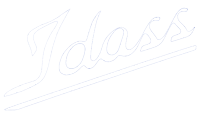
7 Essential Functional Movement Exercises
The following is an example of a basic human movement program with exercises and comparable daily activities:
1. Squat
The bodyweight squat is a simple movement pattern that can be progressed or regressed through altering the level of support, range of motion, or resistance. The squat is comparable to sitting down and standing up.
2. Lunge
The lunge is a vital movement pattern that has good transfer into walking, stair climbing, and picking up things from the floor. Again, it can be progressed or regressed through the level of support, range of motion or resistance.
3. Hinge
A classic deadlift movement is not only an excellent exercise to strengthen the posterior chain but is one of the most functional of daily movements – picking up an object from the floor. The deadlift can also easily be performed in any environment e.g. with a holdall, shopping bag, or suitcase. The range of motion and resistance can easily be adjusted and variations like the suitcase deadlift offer additional flexibility and progression.
4. Push
An exercise like the push-up is the simplest upper body push movement but can offer difficulties for those with reduced mobility. As a baseline exercise, I actually prefer a standing resistance band press as it also helps to develop balance. For those who are unable to stand, the exercise can be regressed to a seated version.
5. Pull
A standing resistance band pull offers a great antagonist to the resistance band push. As with the push version, the resistance band pull can also be performed from a seated position if necessary.
6. Rotate
A standing resistance band rotation is effective in developing both rotational strength and balance. Like the resistance band push and pull, it can be performed from a seated position if necessary.
7. Walk
The ability to walk is such a fundamental part of daily life that it should be a priority in any training program, and specifically one aimed at beginners. This can mean that the training program actually contains walking or that it is constructed to help enable a healthy gait (most likely it will be a combination of both).
Credit - Matt Palfrey
